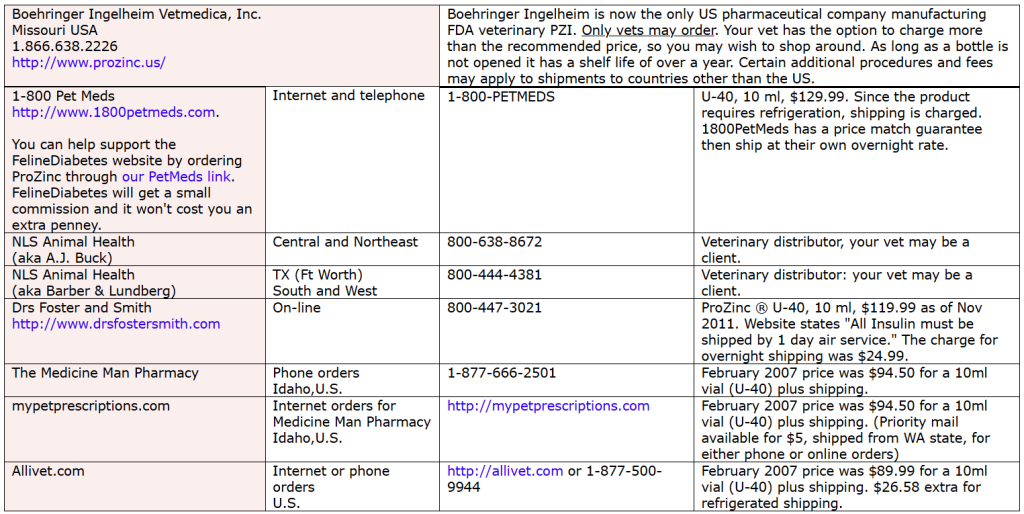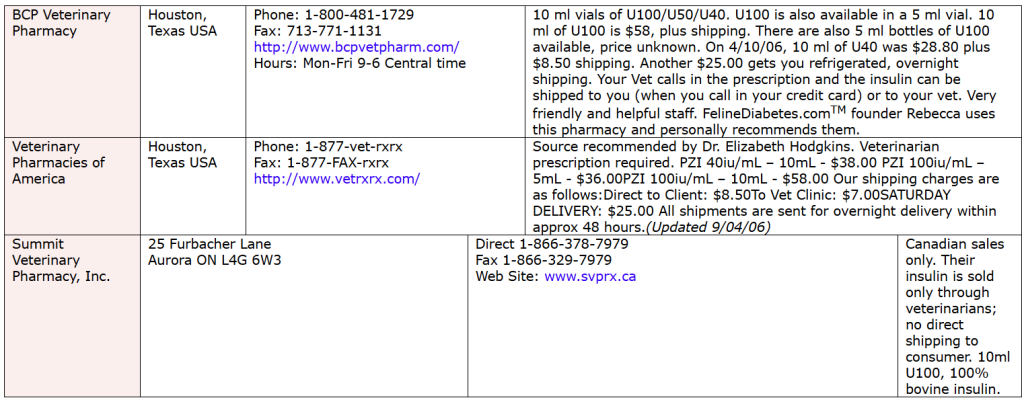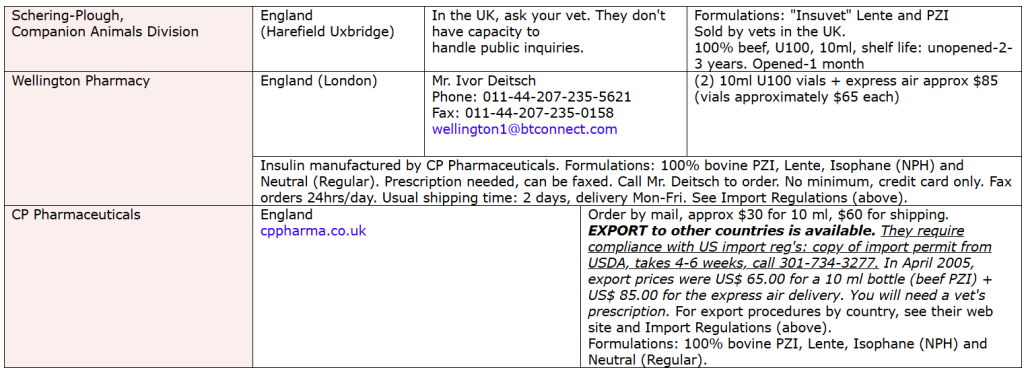Pet Health Supplies: PZI Insulin Source List
Sourcing ProZinc insulin.
Most information has been checked; however, this page may contain information that is now obsolete and inaccurate. You are strongly encouraged to check your plans, and ask questions of the good people on the felinediabetes.com message board: take advantage of their practical and up-to-the-minute experience. You are also invited to report inaccuracies or new information to us.

Sources of 100% beef PZI **

Source of 100% beef PZI -- if you live in the UK **

To locate a pharmacy near you (in the US) that compounds PZI:
International Academy of Compounding Pharmacists (IACP): a professional association,
www.iacprx.org (they have an online search/referral form)
or call 800-927-4227. You will need to ask the pharmacist what type of insulin they use, if it matters to you.
Sample listing** of human "Regular" PZI compounding pharmacies:

Sample listing** of Animal-source PZI compounding pharmacies:

**Caveat emptor. Know what you’re buying. This page may contain information that is now outdated. You are strongly encouraged to check your plans, and ask questions of the good people on the message board: take advantage of their years of intensive, practical and up-to-the-minute experience as owners of diabetic cats. Also, be sure to discuss which insulin to use with your vet.
You are invited to send corrections and updates to webmaster@felinediabetes.com
Last updated November 2011.
